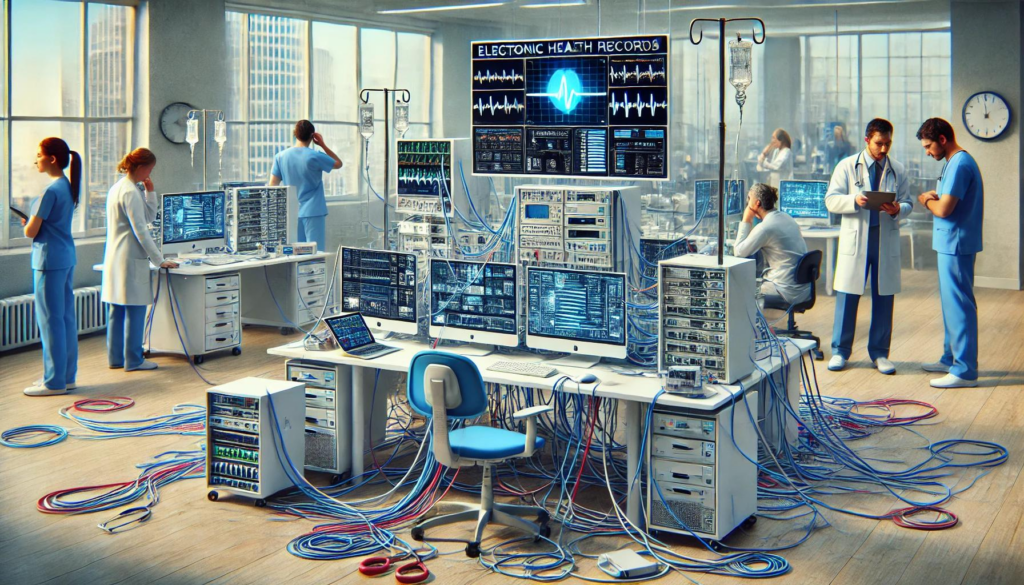It’s well documented that the healthcare industry is the most targeted by – and most vulnerable to – cybersecurity attacks. And yet only approximately 24% of IT and/or Security managers and directors contributing to ClearDATA’s 2022 State of Cybersecurity in Healthcare Providers survey reported advanced cloud maturity for their organization of the sort that could prove resilient against cyber-attacks*. Cyber criminals are motivated by the fact that stolen medical data, such as highly sensitive protected health information (PHI), can fetch top dollar on the black market. According to a Trustwave report, stolen medical records can sell for as much as $250 per record, due to the sensitive and intimate nature of a victim’s medical data.
As a result, healthcare providers and other industry organizations are at a greater risk of being compromised and should operate with an exceptional standard of proactive threat mitigation and preparation – relying on the utmost caution – when it comes to constructing their cloud cybersecurity strategies. Many healthcare IT executives tasked with creating secure networks and platforms for their businesses may initially consider hiring full time cybersecurity employees, investing in in-house security operation centers (SOCs) to protect their business, and purchasing numerous cybersecurity software packages to protect their infrastructure.
In-House Investment
Although hiring full staff with expensive human capital, building out dedicated SOCs, and purchasing enterprise-grade cybersecurity software packages are all potential options to create a secure environment for your company, there are tradeoffs that an organization needs to weigh, dependent on its maturity, size, and budget capacity.
Human capital is typically the largest budget line item for an organization, and the talent shortage makes it an even costlier prospect. Between recruiting, hiring, and onboarding cyber security professionals, healthcare organizations incur both cost and liability by building complete cybersecurity teams in house. Secondly, building an on-site SOC is a weighty investment of both time and money that can negatively affect a business’s financial performance and even time to market. Thirdly, threat intelligence is a pricey consumable for many HCO’s, costing hundreds of thousands of dollars per year. Finally, cybersecurity software packages are a great starting point to block relatively straightforward cybersecurity threats, but they require augmentation by skilled cyber defenders to prevent highly sophisticated threats from successfully exploiting vulnerabilities.
Managed Detection and Response Services
For those organizations for whom insourcing exhaustive cybersecurity and compliance functions isn’t a viable option, there is an efficient method to offload some amount of liability and overhead. Managed Detection and Response organizations enable those HCOs to leverage external, specialized cybersecurity resources.
With this model, HCOs receive a complete cybersecurity solution from an expert third party. These services should include a full suite of tech-enabled, data-backed services including – at a high level – threat detection, incident validation, and 24/7/365 response from cybersecurity experts to neutralize and/or contain threats before they damage business or impact patient care.
This immediate response is arguably the most important part of this equation because they can offer a level of responsiveness and agility, at a competitive price point, that an in-house team operating out of their own SOC will struggle to implement and maintain.
If full-time cybersecurity employees or a SOC are already in place, Managed Detection and Response services can serve to amplify and extend existing defenses by filling gaps in the coverage or ensuring 24x7x365 coverage at a lower price point.
Divide and Conquer with Managed Detection and Response
Ultimately, some healthcare organizations feel they are more prepared to face cybersecurity threats than others. In a recent survey of dozens of leading healthcare companies, the ClearDATA team actually found that while 64% of IT leaders at the C-Suite level reported high confidence in their cybersecurity, only approximately 24% of IT Directors and IT Managers who interact with the cybersecurity infrastructure on a daily basis felt their cloud maturity was advanced*. With initial access into enterprise environments during 2021 coming most frequently from exploitation of public-facing applications1; many executives tasked with ensuring their organization’s security may actually have a less-secure cloud environment than they realized.
Regardless of whether your company is just getting started building out a robust cybersecurity posture, or you have fully staffed teams in custom-built SOCs tasked with protecting your organization around the clock, Managed Detection and Response services are a valuable option to supplement the security of your healthcare business. Services to proactively update your cybersecurity defenses based on evolving threat intelligence trends, as well as automatically detect, log, and respond to cybersecurity threats in real-time are standard services offered in ClearDATA’s Managed Defense program.
If you have questions about strengthening your cybersecurity defenses, reach out to our team of defense experts to see how we can augment your program.


